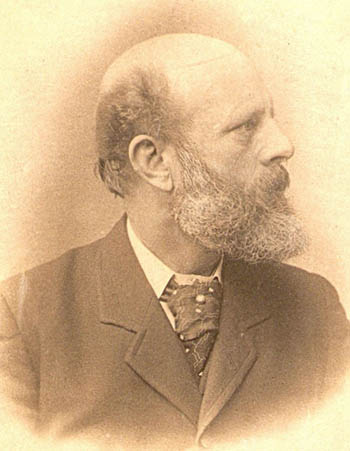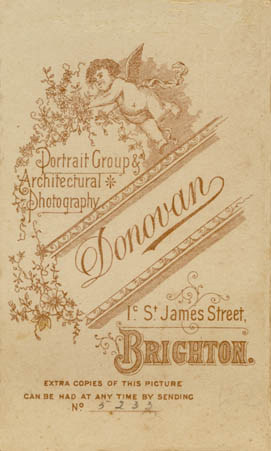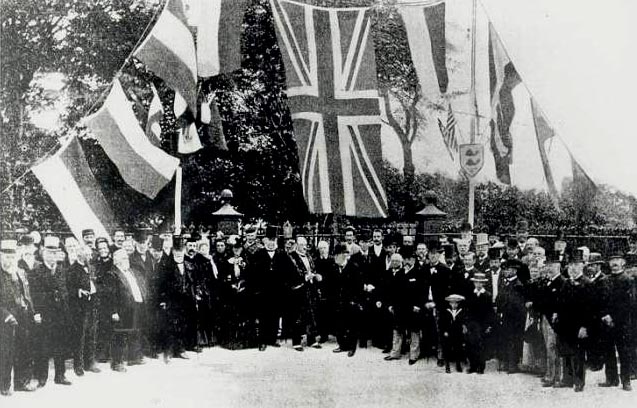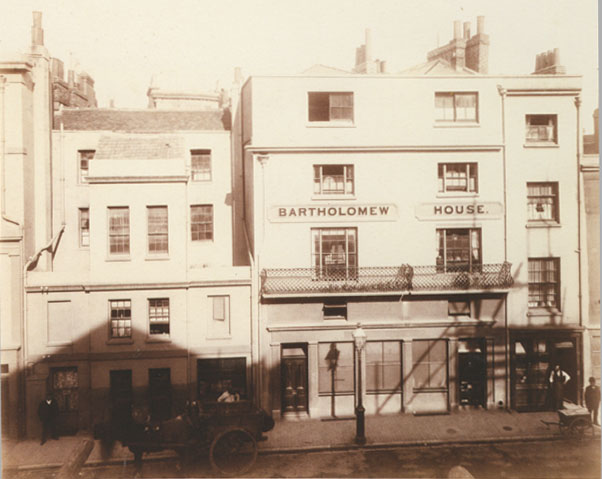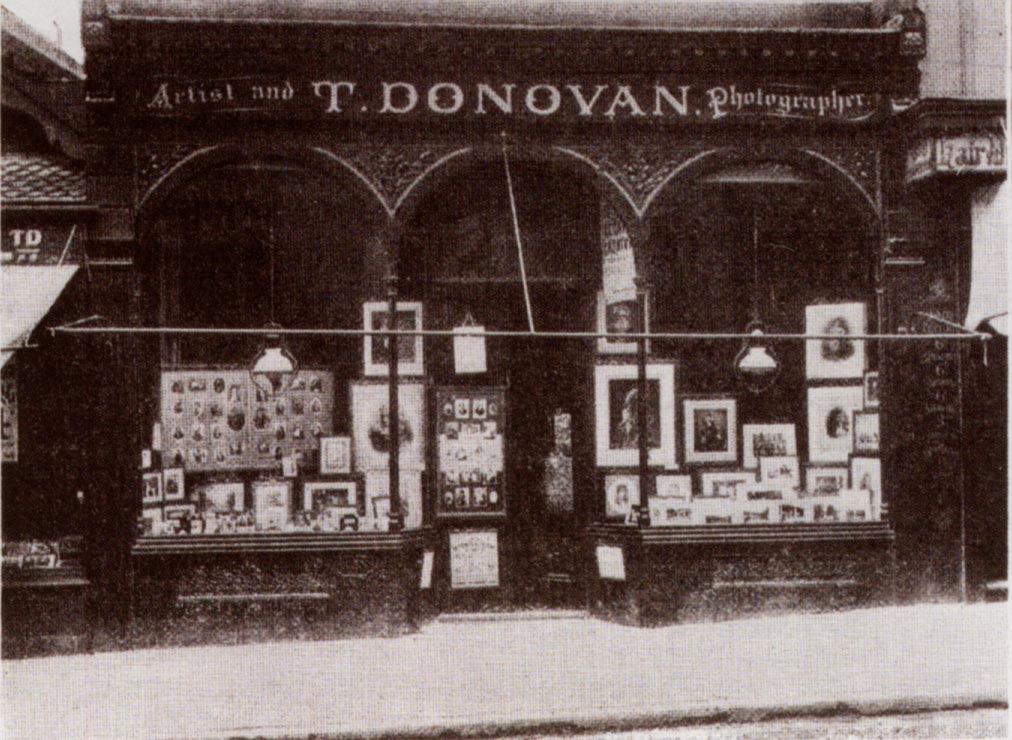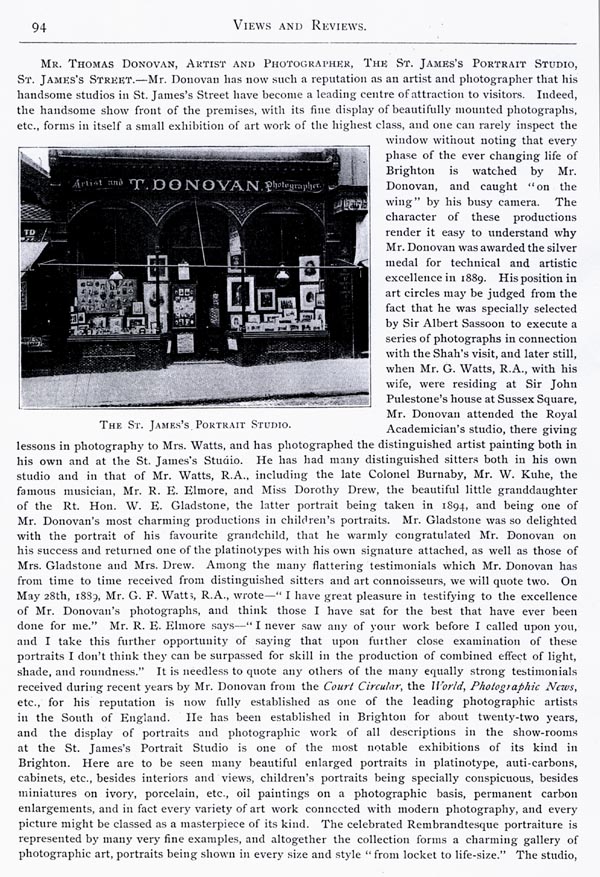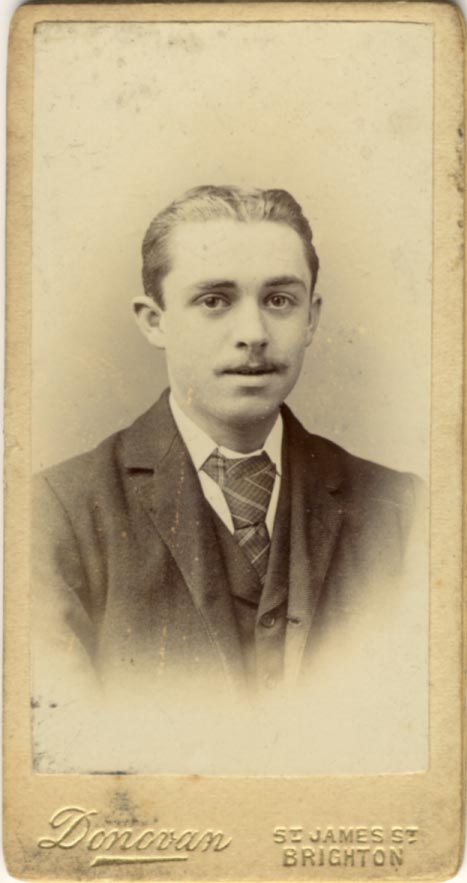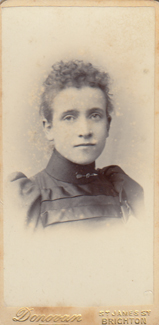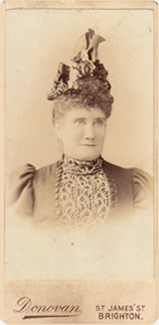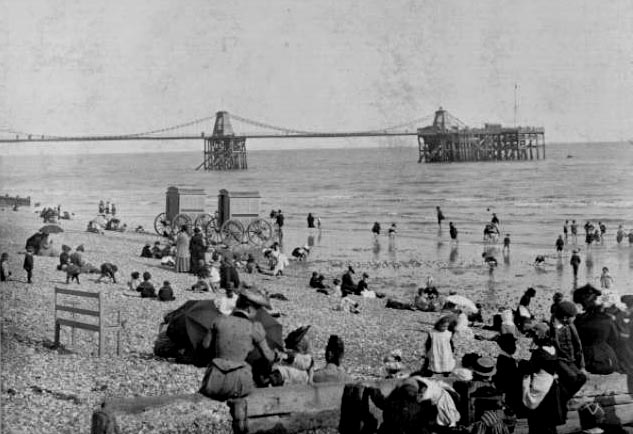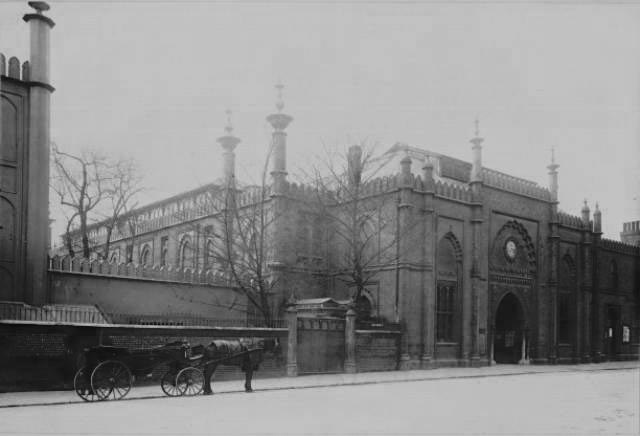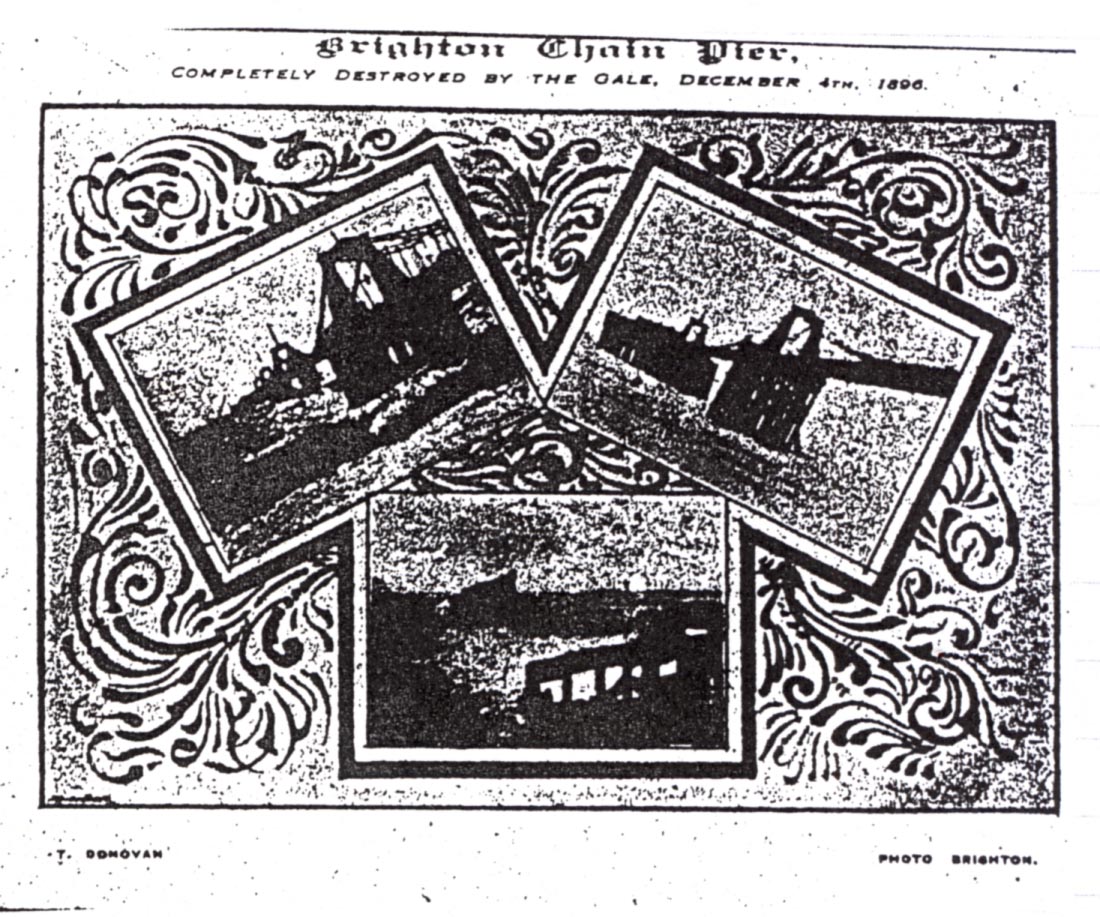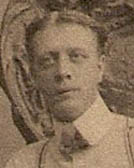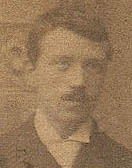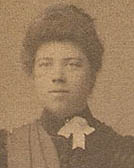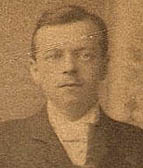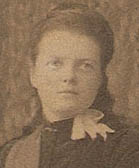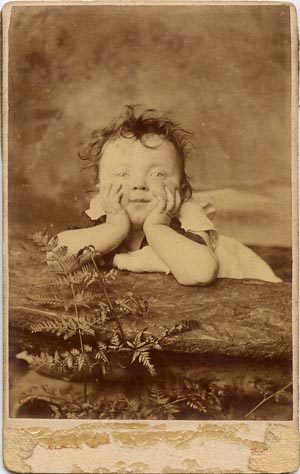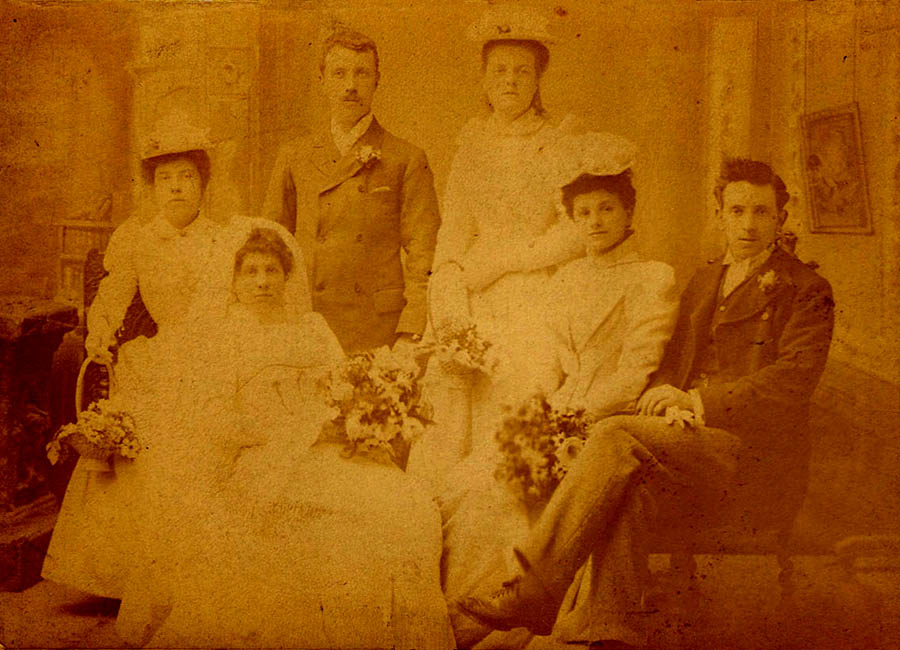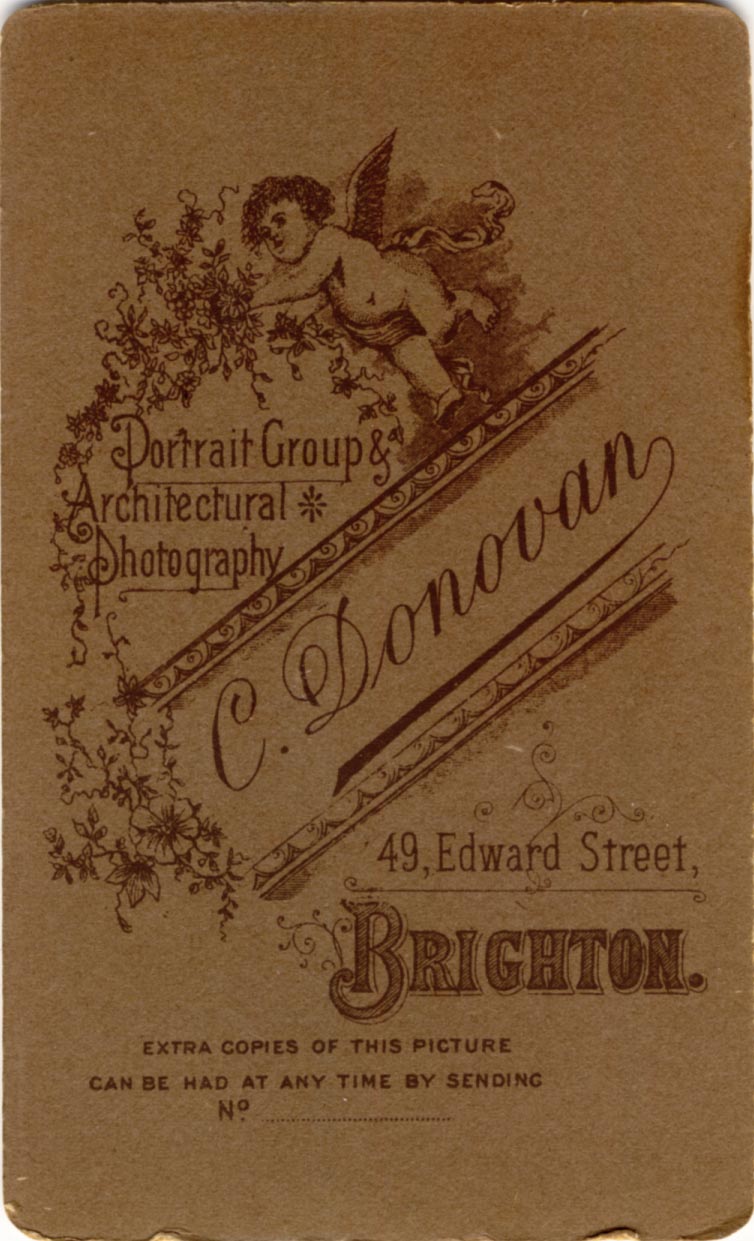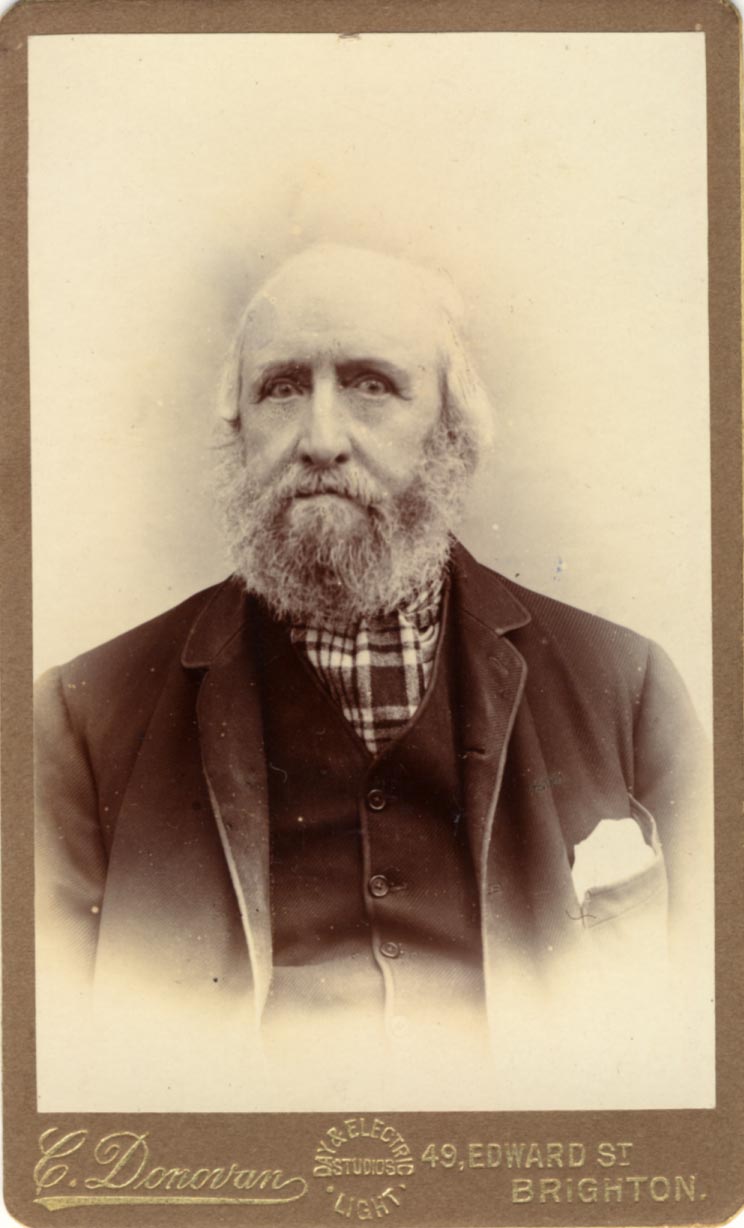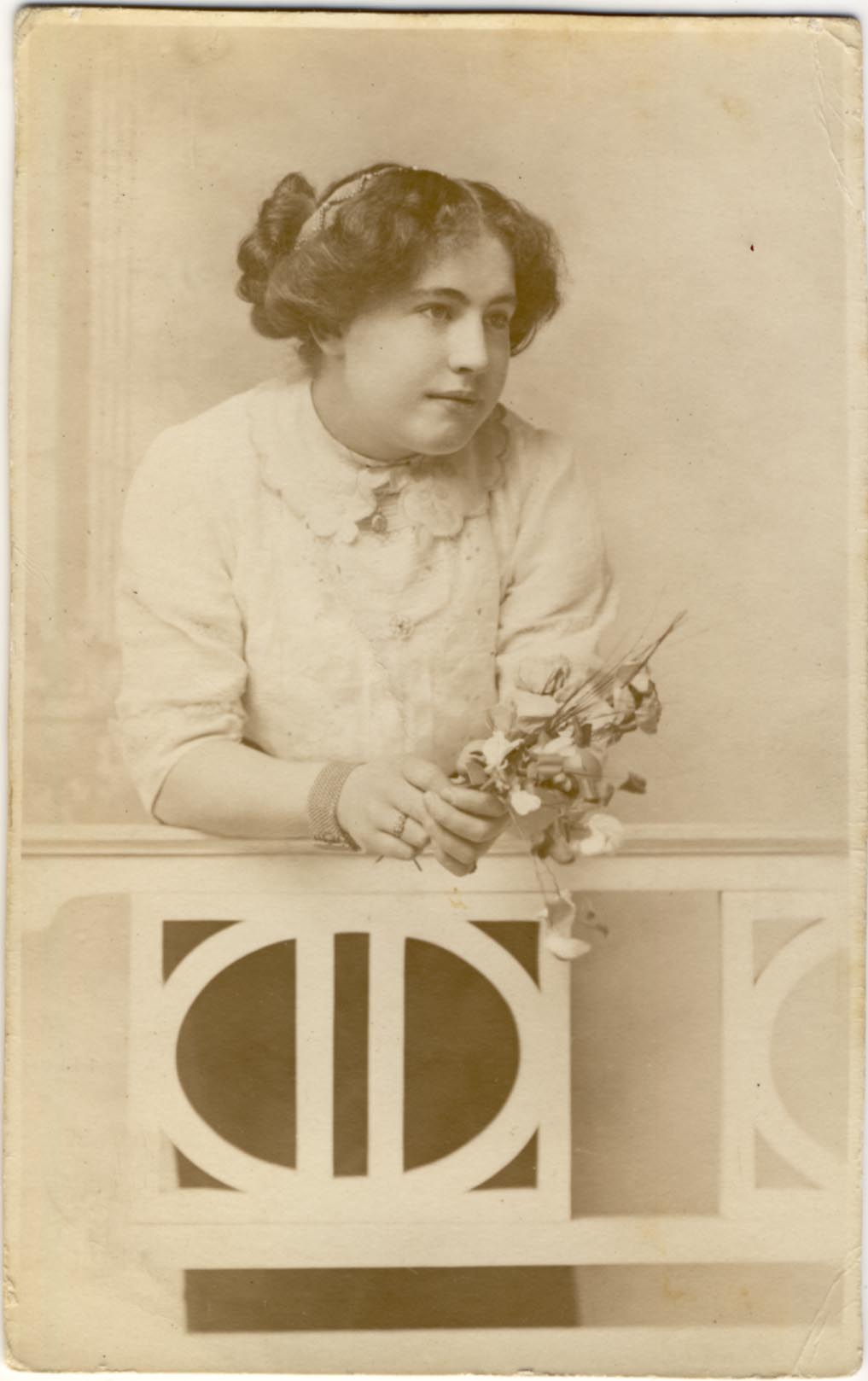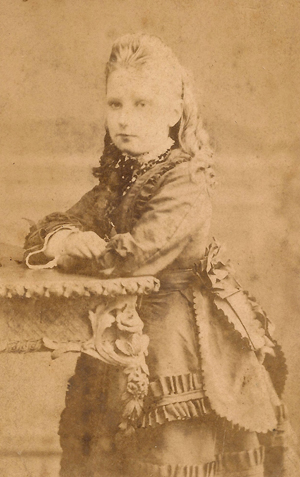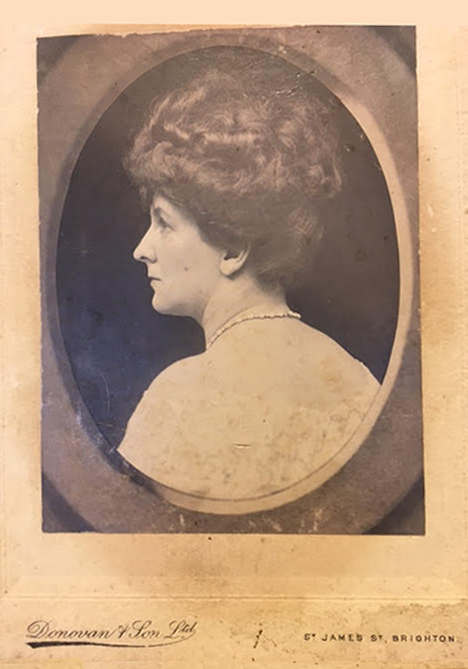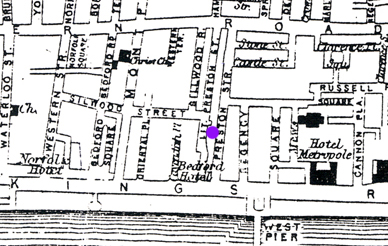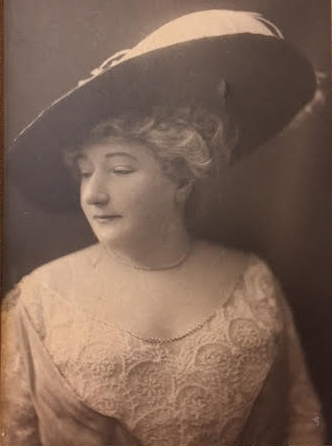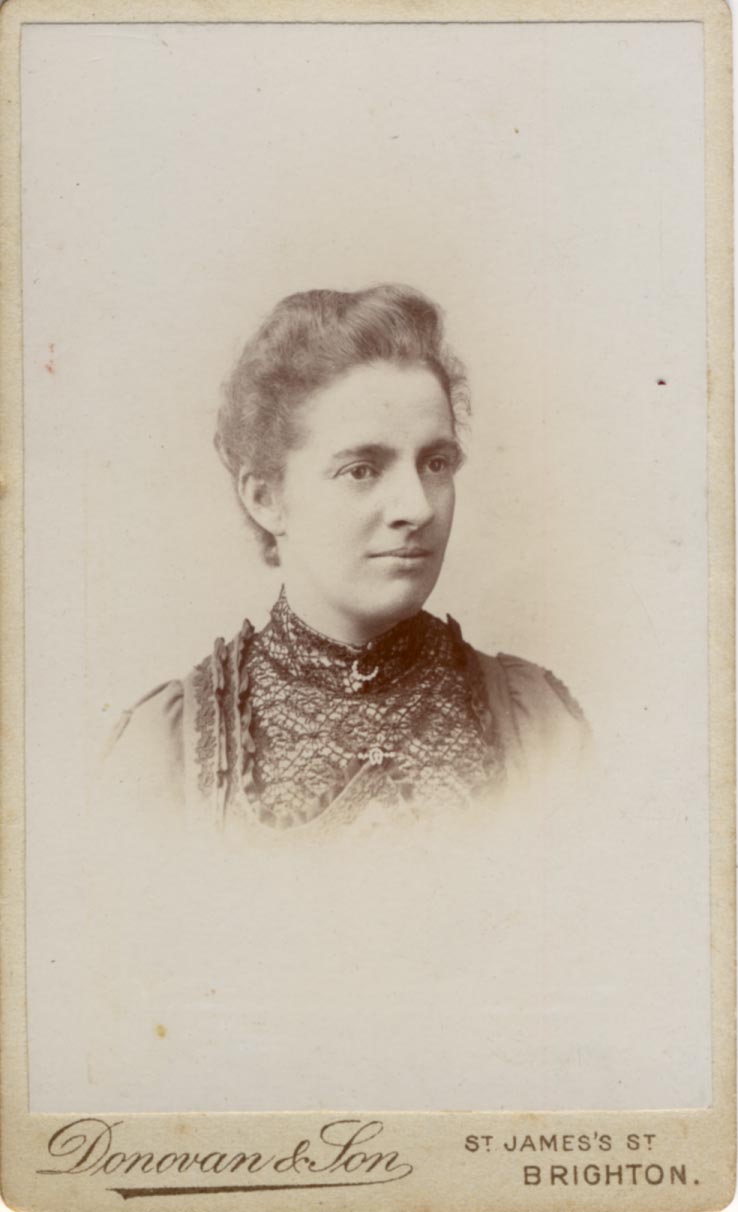
[ABOVE] Portrait of Edith Tocque, a carte-de-visite
photograph by
Donovan & Son, 1 St. James's Street, Brighton (1902). Edith Maud Tocque
was born in Richmond, Surrey in 1869. At the time of the 1901 census,
thirty-one year old Miss Tocque was "living on own means " in Hastings.
An inscription in ink on the reverse of the carte, reads "For Miss
Oram, from Edith Tocque, April 1902". This carte carries the studio
name of "Donovan & Son". In 1902, the studio at 1 St. James Street,
Brighton, was operated by Thomas Donovan and his youngest son, Frank
Donovan. Between 1899 and 1902, when Charles Donovan was a member of the
firm, the studio was known as "T. Donovan & Sons". |
During their long marriage, Thomas
Donovan and his wife Victoria produced six children, all but one of whom
reached adulthood. As each child reached maturity, he or she was
recruited by their father to work in his photographic studio in St.
James's Street. When a journalist visited Donovan's studio around 1897,
it was noted that all the work was directed by Thomas Donovan, adding
that "Mr. Donovan, however, is ably assisted by his two sons and his
daughter" [W. T. Pike & Co.'s "Views and Reviews : Brighton & Hove"
(c1897), page 95]. In the early
years of his photography business, Thomas Donovan was aided in the
studio by his wife Victoria Donovan (born 1842, Bristol).
In the 1881 census, Mrs Donovan is entered on the census return as an
"Assistant in Photographer's Establishment". By 1881, the eldest son,
Thomas Henry Donovan, known as Henry or Harry, (born 1862, Clifton,
Bristol) and his younger brother, Charles Edward Donovan (born
1864, Clifton, Bristol), were both employed by Thomas Donovan as
photographer's assistants. By the time the 1891 census was taken, with
the exception of his eldest son, Harry Donovan, who had emigrated
to the United States, all of Thomas Donovan's
grown-up children were assisting him in his St James's Street studio.
Charles Donovan, by this date a twenty-seven year old
widower, was employed as a "Photographic Printer". Frank Herbert
Donovan (born 1871, Bristol) retouched the photographs produced at
his father's studio. Twenty-one year old Minnie Victoria Donovan
(born 1869, Bristol) is described as a "Photographic Artist" in the 1891
census, while her younger sister Florence Alice Donovan (born
1873, Brighton) is entered on the return as a "Photographic Assistant".
By the time the next census took place ten years later, Charles
Donovan had remarried and was living away from the Donovan family
home with his wife and four children. At this date (31st March 1901),
Charles Donovan was still being employed as a photographer by his
father, but within a year he had opened his own photographic studio
(see below). Thomas Donovan's youngest son,
Frank Herbert Donovan, who was now in his late twenties, had
progressed to the status of photographer and had become a partner in the
family firm. [ In 1902, the studio at 1c St James's Street, Brighton,
was known as T. Donovan & Son, yet over the preceding few
years, from 1899 to 1901, before Charles Donovan left to set up his own
studio, the firm was listed as T. Donovan & Sons ]. Thomas
Donovan's eldest daughter, Minnie Donovan, had continued her
photographic career and on the 1901 census return she is described as an
"Artist Photographer", aged 32. However, by the mid 1890s, Florence
Alice Donovan had abandoned photography and was pursuing a
professional singing career. In the 1901 census, twenty-eight year old
Florence Donovan gives her profession as "Vocalist".
Thomas Henry Donovan (born 1862,
Clifton, Bristol), generally known to family members as Henry or Harry
Donovan, left Brighton for the United States around 1889. After arriving
in New York, Harry Donovan established a photographic studio in the
Brooklyn district of the city. Harry Donovan later worked as a
photographer in Jamestown, a town situated in the far west of New York
State, not far from Lake Erie. Eventually, Harry Donovan settled in
Allentown, Pennsylvania where he worked as a professional photographer.
Harry Donovan died in Allentown on 30th December 1930.
|
